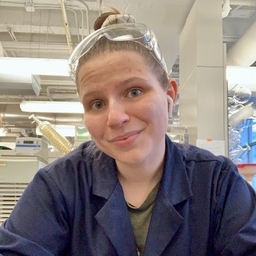
Ada McVean
Science Writer at Freelance
Science Writer 🐢 @ChemistryWorld, @SkeptInquirer, @McGillOSS 🥼 MSc from McGill 🧬 🇨🇦 in 🇬🇧 she/her 🏳️🌈 #LeafsForever
Articles
-
1 week ago |
chemistryworld.com | Ada McVean
Shop shelves stacked high with nearly every colour and flavour of disposable e-cigarettes have become a common sight in the UK’s town centres. But from 1 June 2025, single-use vapes will be illegal to sell across England, Wales, Scotland and Northern Ireland. The UK is not the first country to ban disposable vapes. Last year, the Australian government banned the import of all disposable vapes into the country, while this year Belgium became the first EU country to ban the sale of disposable vapes.
-
3 weeks ago |
chemistryworld.com | Ada McVean
Chemical and microscopic analysis of artefacts believed to be snuff tubes provides the oldest direct evidence for the use of psychoactive plants in the Peruvian Andes. The team of archaeologists that studied the bone- and shell-based paraphernalia believe that they were used in rituals over 2000 years ago to reinforce leadership through links to the mystical world.
-
2 months ago |
chemistryworld.com | Ada McVean
For the first time, fermentation has been achieved in space. Miso made aboard the International Space Station (ISS) aged faster than the controls kept on Earth and contained more fungal mutations. Source: © Maggie Coblentz Miso is a Japanese condiment made by fermenting cooked soybeans, kōji (a starter culture containing the fungus Aspergillus oryzae) and salt.
-
Mar 5, 2025 |
chemistryworld.com | Ada McVean
A computational study has challenged the long-standing notion that electrocyclic reactions can be neatly divided into being either ‘allowed’ or ‘forbidden’. ‘The energy difference between allowed and forbidden alternatives can sometimes be very small indeed,’ says Barry Carpenter, from Cardiff University in the UK.
-
Feb 27, 2025 |
chemistryworld.com | Ada McVean
A unique organic glass discovered in the brain of a victim of the 79 AD Mount Vesuvius eruption is the first known example of high-temperature vitrification of animal tissues. Experiments suggest that the brain was heated to at least 510°C before being rapidly cooled following the catastrophic eruption that destroyed the Roman town of Herculaneum. Source: © Pier Paolo Petrone The transformation of liquids into a glass via rapid cooling is called vitrification.
Try JournoFinder For Free
Search and contact over 1M+ journalist profiles, browse 100M+ articles, and unlock powerful PR tools.
Start Your 7-Day Free Trial →X (formerly Twitter)
- Followers
- 14K
- Tweets
- 31K
- DMs Open
- Yes

RT @ChemistryWorld: As of today, disposable vapes are illegal to sell in the UK. Check out this explainer by @AdaMcVean for info on why, ho…

RT @ChemistryWorld: Starting on Sunday, single-use vapes will be illegal to sell across the UK. But why are disposable e-cigarettes so bad…

RT @HelenaBrors: Killer Tampons from Outer Space or Why We Don’t Hear About Toxic Shock Syndrome Anymore | @AdaMcVean #MHDay2025 #Menstrual…
